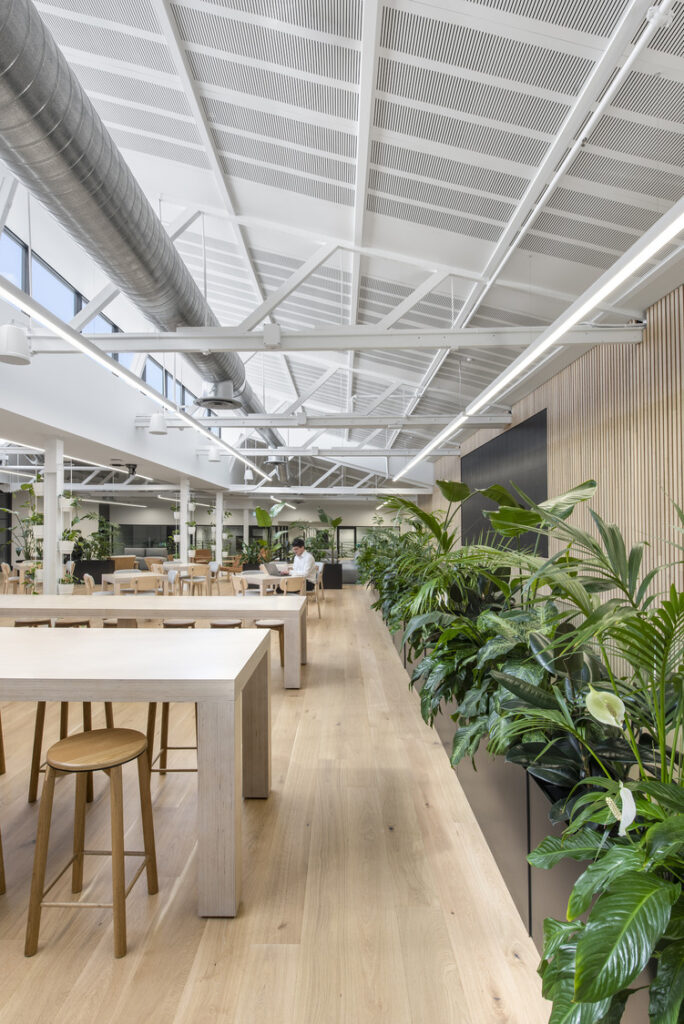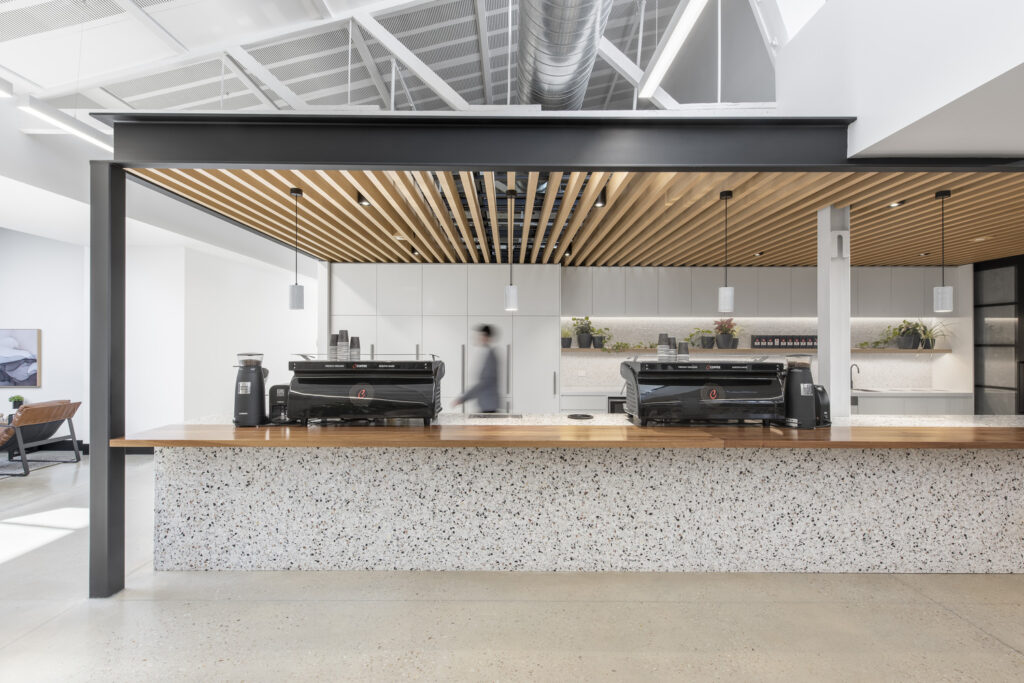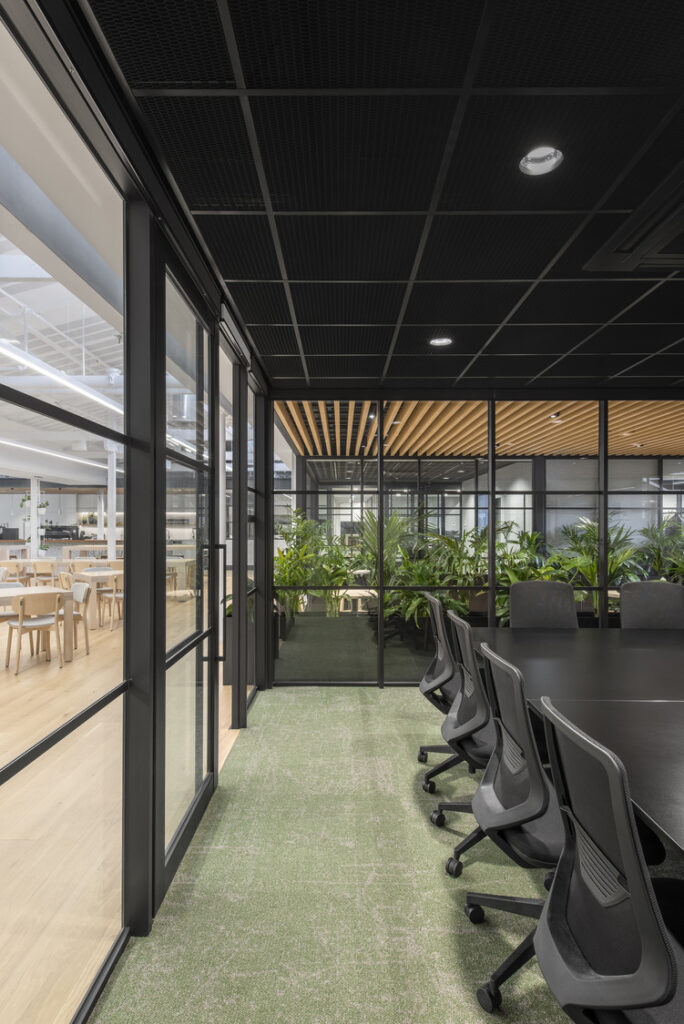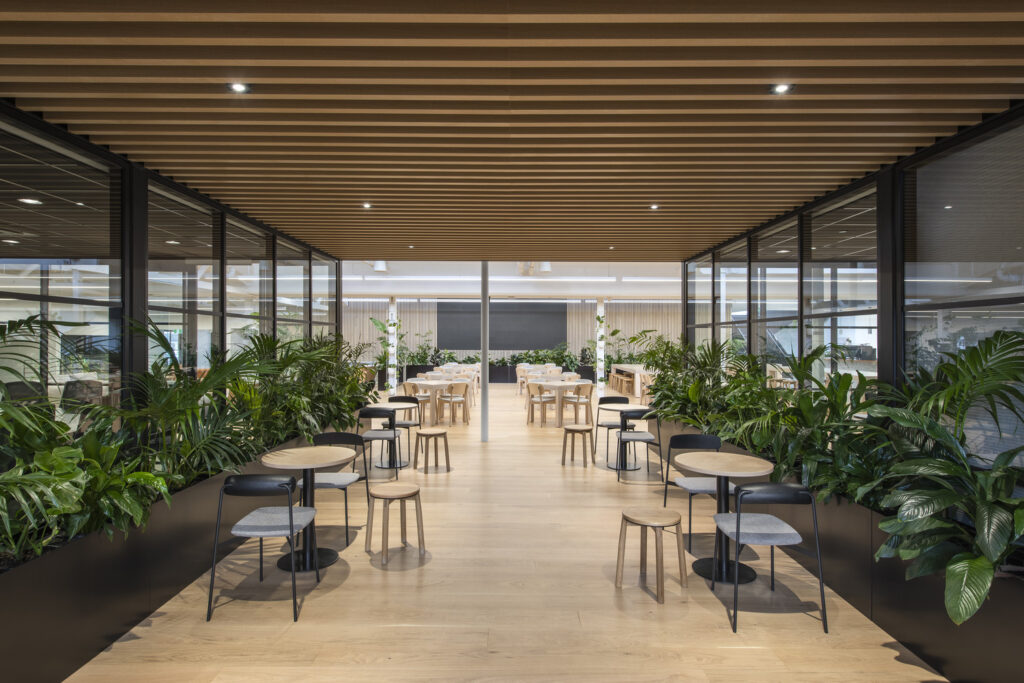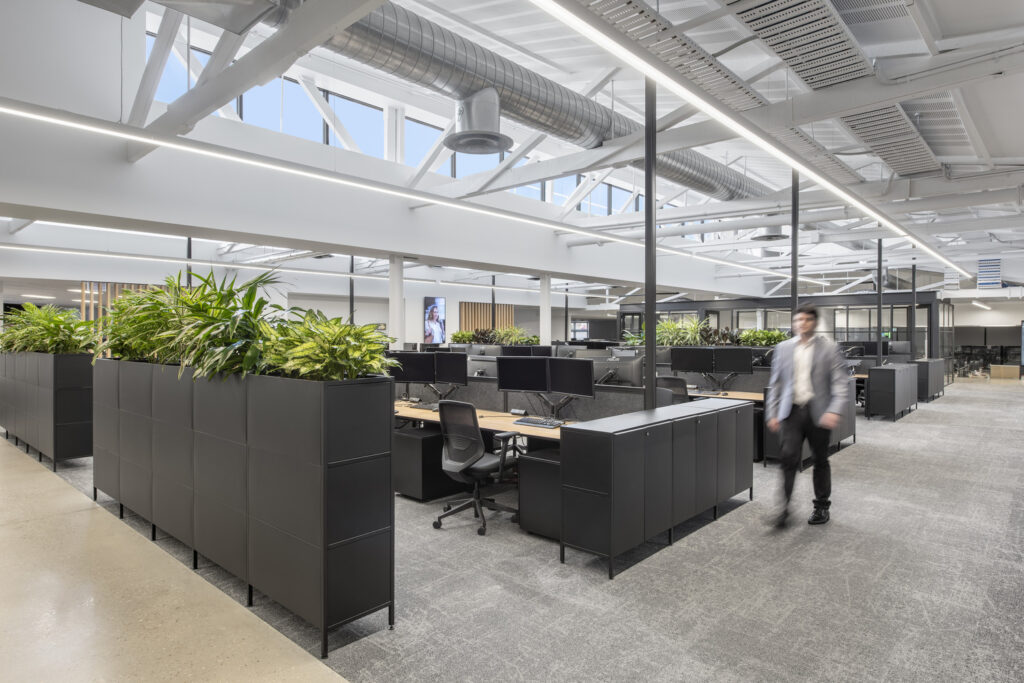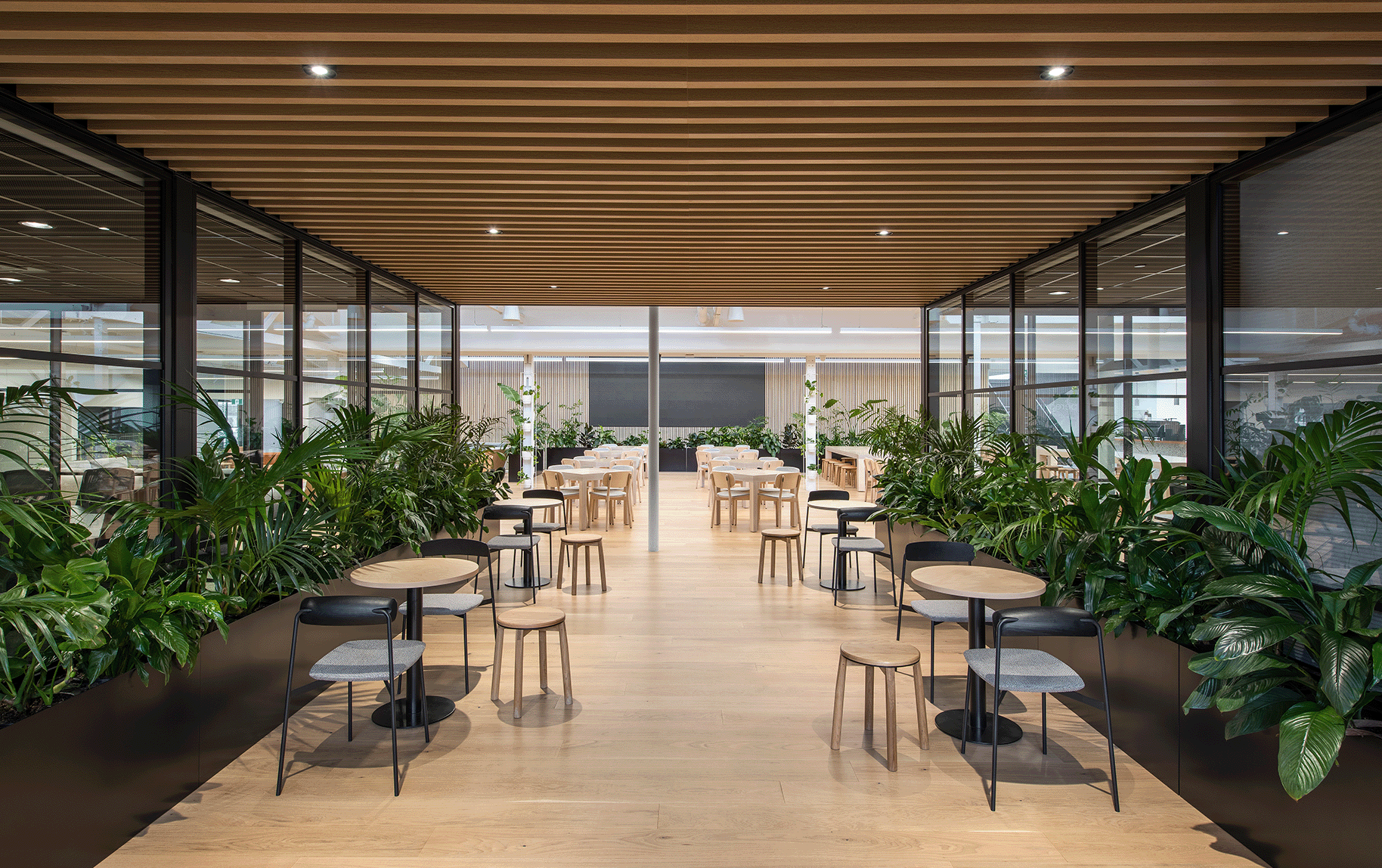A transformational adaptive reuse has converted an Adelaide warehouse and two adjacent buildings owned by Peregrine Corporation into a bright and welcoming company headquarters, with architecture and interior design by global design firm Buchan.
Buchan project leader Valerie Mack says the project unites Peregrine’s employees in a connected workplace designed to support wellbeing, boost productivity and provide flexibility for the future.
Peregrine Corporation is an Australian business success story. Starting with one service station in South Australia in 1984, the family-owned business is now one of the largest private companies in South Australia, with interests that include retail, hospitality and property development.
The growth of Peregrine’s business meant they needed more workspace. “Over the years the business had spread organically across the three buildings,” Mack says, noting that the existing spaces suffered from poor circulation and lacked connectivity. “The client was keen to create a better environment for staff and a platform for further expansion.”
The Buchan team saw the opportunity to cleverly re-configure the existing structures. Working within structural constraints, the buildings were taken back to a bare shell and completely remodelled into an open-plan, contemporary workplace, with greatly improved circulation, amenity and compliance. Meeting rooms, quiet rooms and communal spaces are zoned to support different types of activities across the day.
Architect and project lead Harriet O’Reilly says introducing skylights in the saw tooth roof of the warehouse has allowed natural light to flood the once-dark space, supporting the client’s desire to incorporate biophilic design principles and enhance staff well-being. This was a key design driver.
“Plants are a strong feature of the new spaces, however biophilia is about much more than greenery,” says O’Reilly. “Biophilia is about connection to nature. It’s about materiality, form and long-distance views that allow you to see a cloud moving across the sky or trees swaying in the wind. It is also about having access to outdoor spaces.”
Achieving the latter was a challenge, due to the buildings’ location hard up against a busy road. The solution was to install a glass wall looking onto the rear carpark, where a small garden has been planted. A new roof terrace provides staff with access to the outdoors, reached via a sculptural, steel staircase that creates an architectural feature. The extensive use of timber flooring, wall cladding and furniture creates a further connection to nature.
Peregrine is very proud of its home city and State and champions South Australian businesses at every opportunity.
“We were able to specify locally-made products including handmade light fittings, bespoke furniture and workstations,” says Mack. “Specifying local products is positive socially as well as environmentally. We supported the local economy and reduced the embodied energy generated by transportation. It also proved beneficial in avoiding supply chain issues during the Covid lockdowns.”
Considerable time went into space planning to create sightlines between teams that needed to work together, maximising efficiency. Modular workstations and storage units allow for future flexibility, giving the business the capacity to easily reconfigure space as needed.
At the heart of the new workplace is a ‘town centre’, where a cafe doubles as a training space for the baristas who work in Peregrine’s many hospitality businesses. The cafe creates a constant hive of activity that adds vibrancy and provides a place for people to informally share information and ideas.
“We’ve opened up the spaces to be physically and visually connected, allowing all of the business teams to be co-located,” concludes Mack. “The biggest cost to any organisation is people and to create a place where people want to work supports a stronger workplace culture and contributes to staff retention.”
Photography | David Sievers
